The #1 Pasta Dish You Should Never Order at a Restaurant, According to Chefs
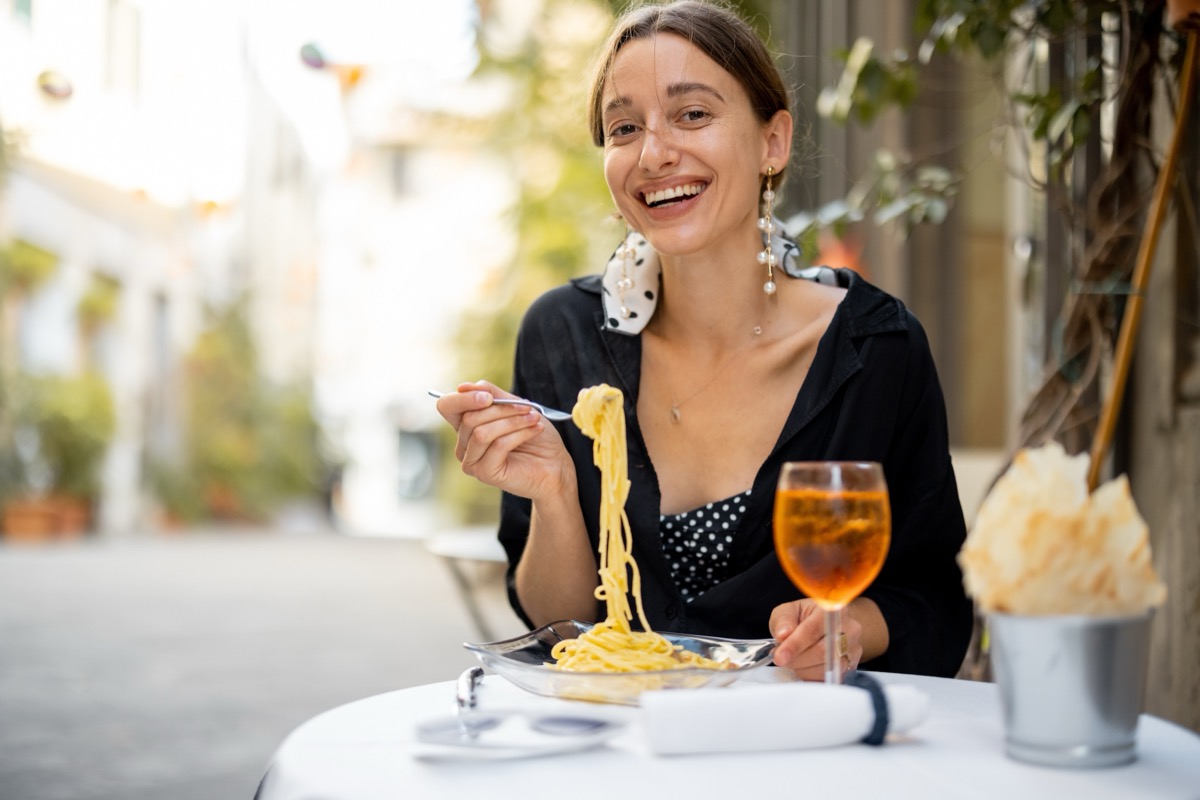
Pasta is one of the most beloved comfort foods. According to the International Pasta Organization, a staggering amount of Americans eat pasta regularly. Their data shows 86% of people across the U.S. eat the Italian dish at least once a week, while 33% of Americans consume pasta up to three times a week. And who can blame them? Whether you prefer a tangy pesto sauce, just noodles and butter, or a spicy tomato base, pasta is delicious any way you make it.
A hearty bowl of pasta is hard to beat, and while it's easy to make at home, it's also a satisfying entree to enjoy dining out. However, according to chefs Eat This, Not That! spoke to, there are a few pasta dishes to avoid at a restaurant, including a few popular dishes you've probably ordered like spaghetti and meatballs.
Avoid the Spaghetti and Meatballs
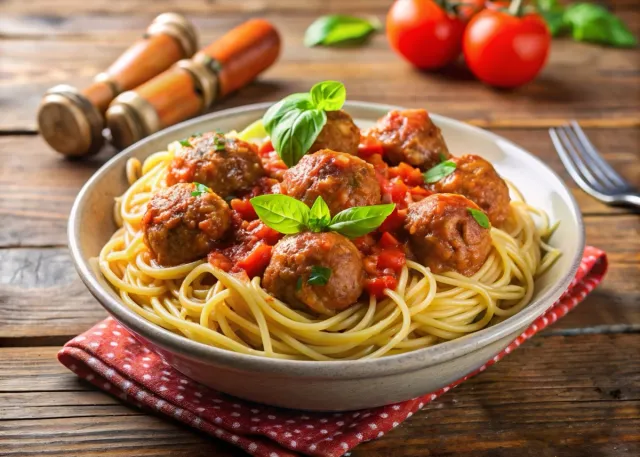
While it's the quintessential pasta dish, it's one you should steer clear of at most restaurants, says Maricel Gentile, Chef and Owner of Maricel's Kitchen.
"The sauces are often uninspired, canned, and the meatballs frozen from a box count of 144. I may be a chef who focuses on Asian foods – but my Italian mother-in-law made sure I could cook Italian!"
But there is an exception. "If it's an authentic Italian or Italian-American place, then there is a chance the meatballs will be acceptable to order, but only if they're all perfectly round and about 1 inch in diameter," she explains. "If not, order something else – just not the Fettucine as it's also probably from a can too.
Skip the Fettuccine
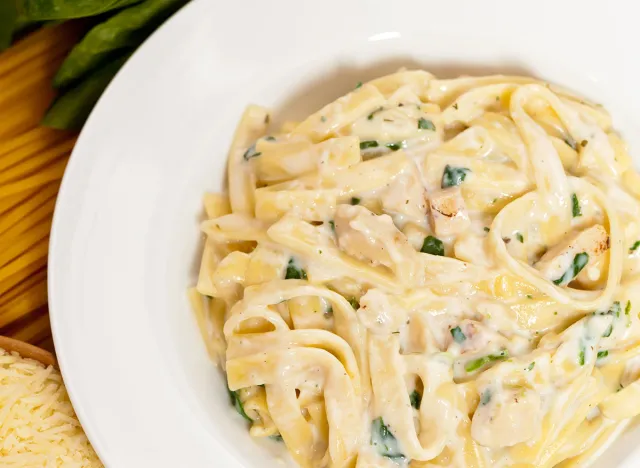
Speaking of Fettuccine, if you're trying to stick to a health-consciousness routine, consider skipping the heavy-sauced dish. Chef William Davis, Executive Chef at the Nourish Cafe at Pop Life, says, "If my goal is to eat what is best for me and my health, cream sauce is not a good choice at all, as it has high calories, high fat, high sodium, and no redeeming nutritional value."
He adds, "At the end of the meal, you will be full but not satiated, contributing to you being hungrier again sooner rather than later. Look for a dish that has fresh veggies, herbs, and a nice garlic or tomato sauce."
Michelin-trained Chef Julian Boudreaux, a private chef who does catering in Joshua Tree, California, and Los Angeles, agrees not to order a dish with cream sauces, but for another reason.
"Alfredo is not an authentic sauce and it will not be executed well," he says. The Italians did not create Alfredo and don't like the sauce either. Instead order cacio e Pepe or carbonara. If the restaurant uses high-quality ingredients and comes highly recommended on the menu, then I would say go for it!"
Avoid Complex Sauces and Certain Seafood
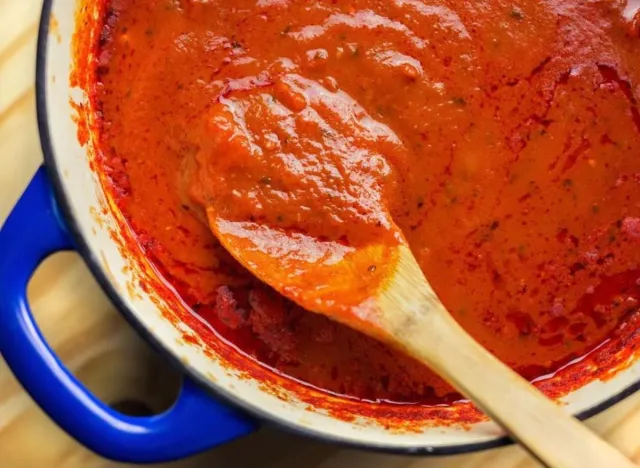
But Alfredo isn't the only sauce to avoid. Chef Julian explains that complex sauces can ruin your meal.
"A complex sauce is when it has multiple layers, textures, and flavors. There are too many vegetables, garnishes, or seasonings, and it just becomes very confusing," he explains. "It will have too many competing flavors."
He explains, "Complex seafood pasta dishes are a no-go for sure. It will all be frozen and will not taste aromatic. Never sacrifice quality when it comes to seafood, especially if it's a seafood sauce where everything is just cooked together!"
Don't Order Lasagna Unless it's Made That Day
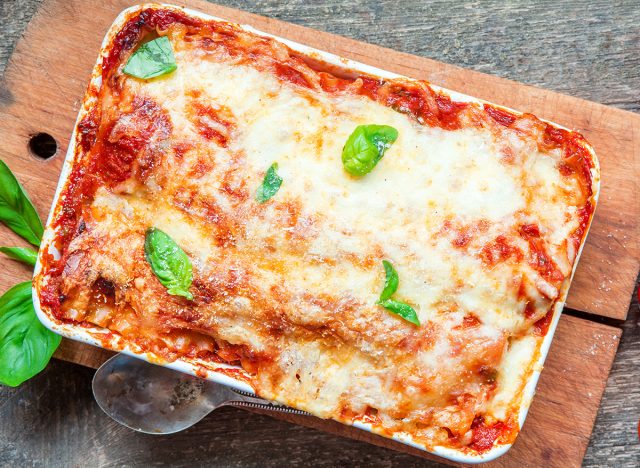
And finally, lasagna has always been a classic go-to, but Chef Julian says unless it's made fresh the day of, don't order it. "It most likely has been sitting there for days," he says. "A lot of times, if it has sat there for too long, it will taste like the walk-in fridge or dried out around the edges." At the end of the day, the key to a successful pasta dinner is to avoid overcooked dishes with complicated sauces that are not prepared fresh.
So What to Get? Anything With Calabrian Chili
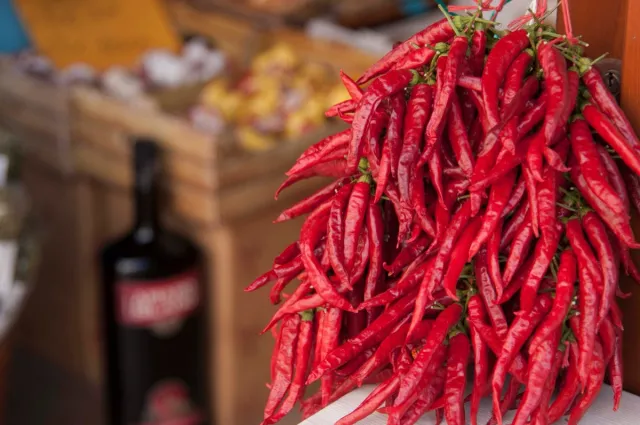
Sometimes, the most authentic Italian dishes boil down to something as simple as a single regional ingredient. Such is the case with Calabrian chili, a smoldering accoutrement that lends heat—and traditional legitimacy—to any number of appetizers, breads, and entrées. It's a favorite for Michael Miceli, co-founder of Colorado-based Mici Italian, who prefers it to an Americanized option like jalapeño.
"Our family grew up adding a little heat to the food we made together, and there are so many delicious and native Italian hot peppers out there that offer far more flavor and versatility," Miceli explains, noting that the chili's inherent smoky elements lend it particularly well to pizza and sausage dishes.









